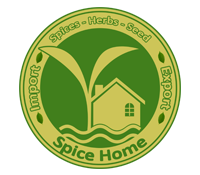Between 1973 and 2010, there were 14 outbreaks of foodborne illness linked to contaminated spices worldwide. Several recent large-scale Salmonella outbreaks in the U.S. were associated with contaminated spices. Did you know that?
The U.S. Food and Drug Administration has developed various interventions available to reduce and prevent disease. Salmonella is the main pathogen associated with spice withdrawal and disease outbreaks, but a number of other bacteria, including E. coli, Clostridium botulinum, and Listeria, can also be found in spices. The Food and Drug Administration reported that of the 21 spices withdrawn in the United States between 1970 and 2003, all but one contained salmonella.

Different types of sterilization:
Bio steam
Steam and high-pressure sterilization is an effective method of sterilization, Microorganism needs adequate contact, sufficiently high temperature, correct time, and humidity
In order to destroy all microbes, steam must be able to come into contact with all
surfaces. Steam can sterilize only surfaces touched by steam. Steam is one of the most reliable means of sterilization. It is non-toxic when it is generated from water free of volatile chemicals. It has a wide activity against microbes and has good accessibility. It is cheap and easy to monitor. Sterilization needs direct contact.
P.P.O
Using technology developed for the medical device and pharmaceutical industries in our propylene oxide pasteurization process, PPO Express is an improved method for treating herbs, spices, and nutmeats.
The process yields a 2 log greater lethality on many products than conventional PPO pasteurization and dramatically reduces post-treatment aeration time. Cosmed Group’s proprietary process reduces the time required to pre-heat almonds and other nuts by several days.
This type is used in most of the spices and herbs and is recommended by the FDA.
E.T.O
Let us open the discussion with a warning. The use of poisonous gasses should remain limited to sterilizing products for which no alternative methods are available. The obvious reason is that whatever kills microorganisms is lethal to humans as well. Most sterilization chemicals and gases are already endangering human health and even live in very low concentrations. We should always consider that we need to do an in-depth risk analysis to see if using poisonous gas is unavoidable. Ethylene Oxide (EtO) is a common gas used for low-temperature sterilization. It is a colorless, poisonous gas that attacks the cellular proteins and nucleic acids of microorganisms.
What we want to know right now is..
Microbial Safety in Spices, herbs, seeds, and nuts
A variety of microbial reduction techniques is routinely employed within the industry for the reduction of pathogens. These techniques include fumigants (ethylene oxide and propylene oxide) and irradiation. The world is changing, Consumers Want Healthy Foods which are not treated with a process that possibly leave behind a chemical residue or create toxins. Therefore Natural steam sterilization/pasteurization with pure steam has gained significantly in popularity. The very short contact (20-40 seconds) with high-pressure steam at a temperature that may vary between 102°C and 122°C makes it possible to decontaminate heat-sensitive herbs, spices, and seeds without adverse effect on quality.
Find out what we use in our factory to reduce bacteria and ensure the safety of our products here
You can also follow us for upcoming articles and learn more about us
